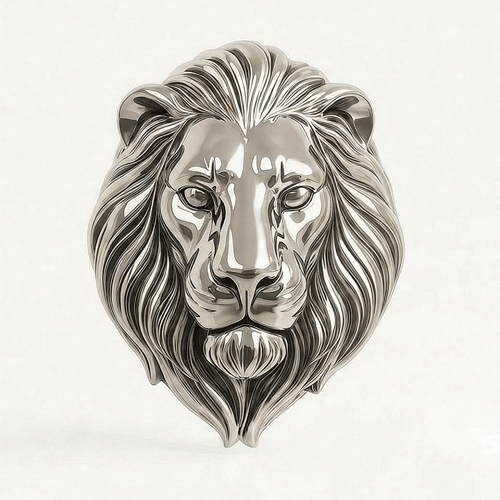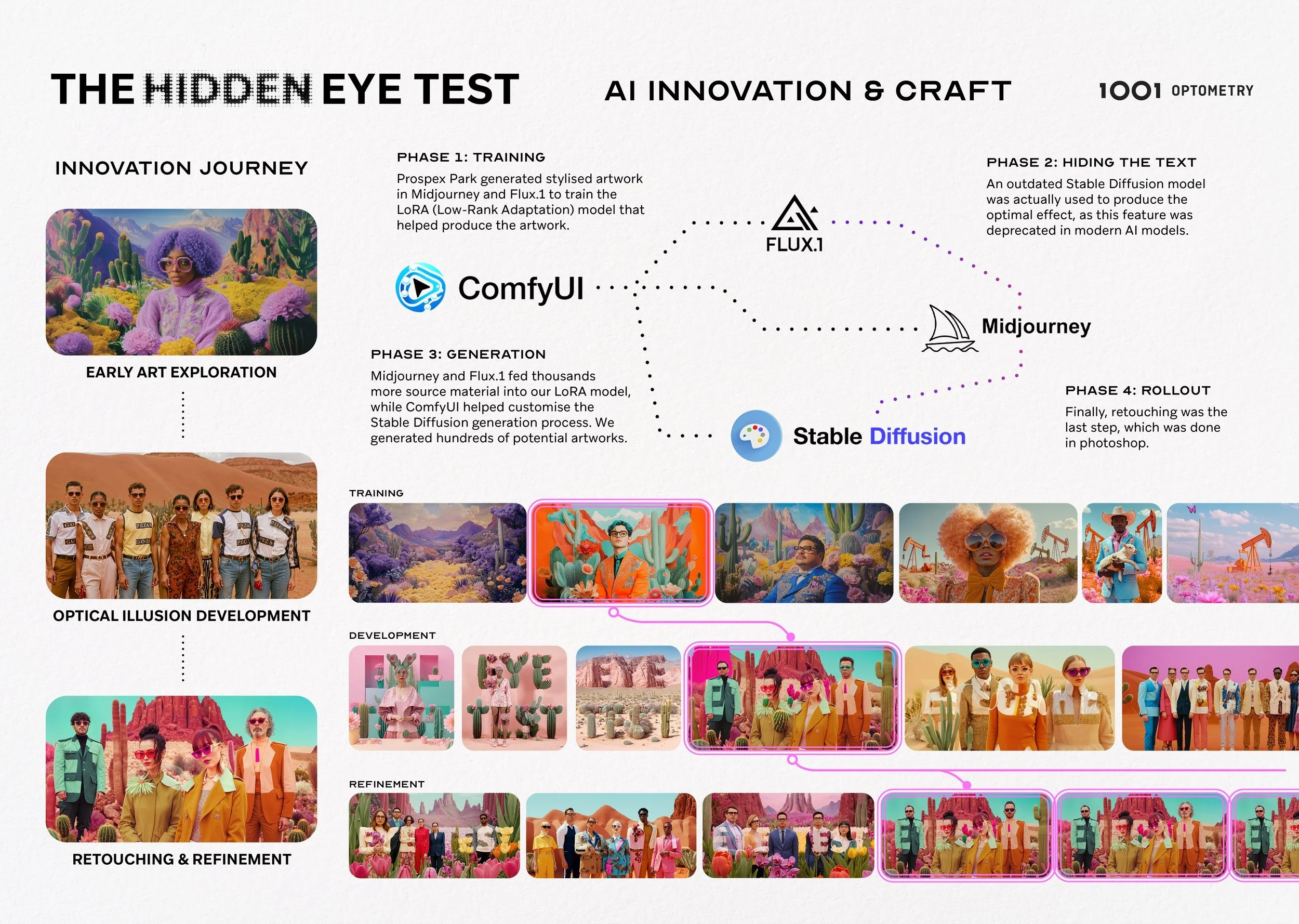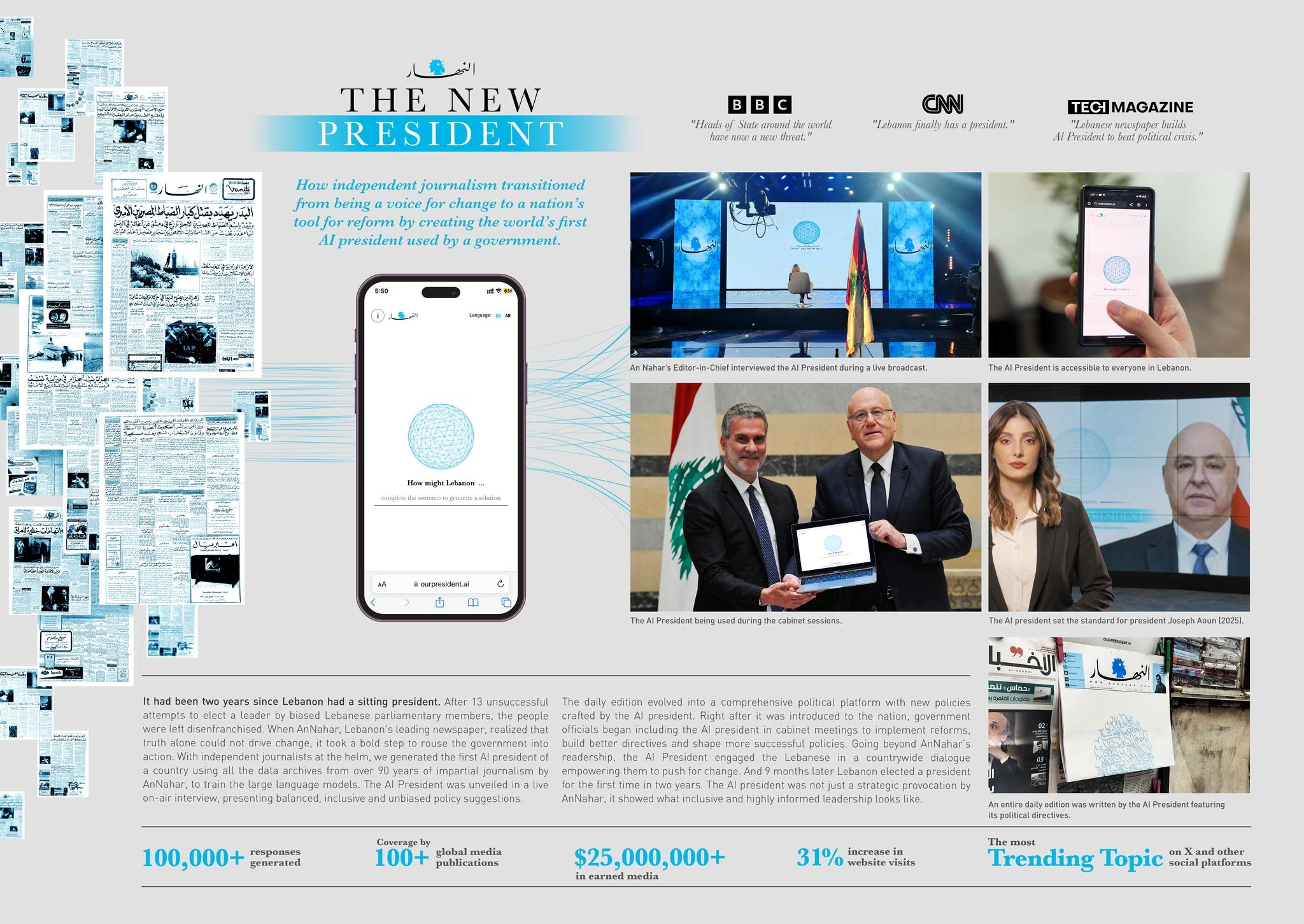Cannes Lions ’25 Wrapped
As Gen AI continues to disrupt — and invigorate — the creative industry, we encountered some beautiful examples of what AI can do. And so did the judges.
At this year’s Cannes Lions, AI didn’t just make noise. It made meaning.
In project after project, artificial intelligence was used
not for spectacle, but for substance.
It showed up in the hands of artists, scientists, strategists, and citizens. And each time, it did something different.
VML and 1001 Opometry used it to help people see. The Hidden Eye Test embedded eye care messages inside optical illusions, using generative AI to create visuals that challenged attention and revealed deeper health insights
Another sent AI above the trees. Greenventory used drones and artificial intelligence to map 400 square kilometers of the Amazon, identifying over 30,000 new trees. It was data paired with indigenous knowledge, built to protect biodiversity and strengthen local economies.
In Japan, Dentsu used AI to look ahead. Sato 2531 modeled a strange and silent future where everyone shared the same last name, due to a marriage law few questioned. The forecast became a national wake-up call, and a conversation lawmakers couldn’t ignore.
And in Lebanon, where 14 failed elections left the country without a leader, Impact BBDO, armed with AI, stepped in.
AnNahar, the country’s largest newspaper, trained an AI president using 90 years of impartial journalism. Citizens tuned in. Ministers used it in cabinet sessions. The public listened. The gridlock moved.
Across these four winning ideas, a pattern is clear:
AI is no longer just a tool for efficiency or automation.
It is becoming a creative partner, a political actor, a cultural
mirror and so much more.
It can help us see what we’ve missed.
It can help us imagine what’s next.
And it can help us make better choices—if we let it.
WATCH ALL THE CASE STUDY VIDEOS HERE >>





